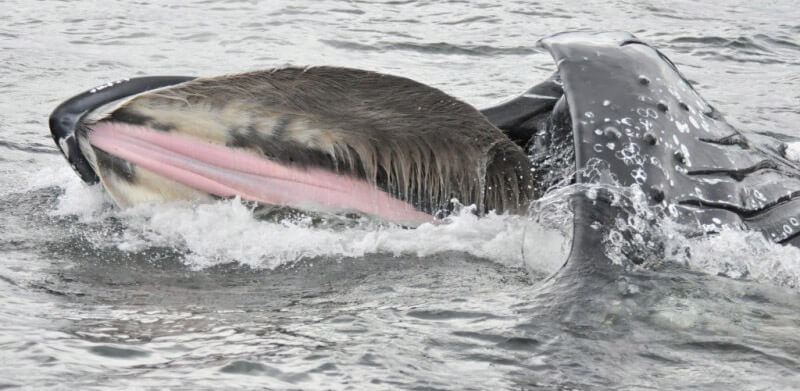Rorquals at lunch
Three rorquals of the St. Lawrence, three different strategies: although the blue whale, minke whale and fin whale are perhaps all baleen “gulpers”, closer examination reveals that they go about capturing their favourite prey in different ways.
The blue whale feeds almost exclusively on krill. It ingests about 1 tonne a day, up to 4 tonnes. Krill live in deep water during the day and rise to the surface at dusk to spend the night. Currents can sometimes force them to surface in the middle of the day. Blue whales can thus be observed surface feeding: seeing this giant turn onto its side on the water’s surface, its immense mouth agape, is simply breathtaking. This technique requires considerable physical effort: with its gigantic mouth, the blue whale takes in a volume of water equal to its own weight of 90 tonnes. But the gain is estimated to be 90 times greater than the energy spent.
You can see a blue whale feeding on clouds of krill in that video of GEMM Lab, Oregon State University.




